Why do you need a content strategy framework?
Manufacturing companies can use content marketing to build an audience, increase revenue and attract better-fit customers.
For companies who are typically the unsung heroes of their sector, building a strong content strategy is an organic way to grow brand awareness, elevate credibility, and build a more sustainable pipeline.
A content strategy is a playbook for written, visual or audio content to help attract a target audience at every stage of the buyer's journey. The framework is a set of tools and processes you can put in place to:
- Align your content and business goals
- Choose the right channels and media for your audience
- Generate content for that audience
- Track the success of published content
It's a framework for selecting measurable tactics in pursuit of continuous improvement.
A content strategy helps:
- Keep teams focused and aligned to goals.
- Clarity on whom you are creating content for.
- Determine which types of content to develop
- Create accountability.
- Identify performance metrics to track.
- How you are going to promote content.
A content strategy helps you plan for growth and avoid random acts of marketing that wastes money and disrupts the clarity of your messaging.
Define your audience
To develop a successful content strategy framework you need to clearly define your content's target audience – your ideal customer profile and the buyer personas involved in decisions to work with you.
Buyer personas are in-depth representations of critical people who work at your ideal customer companies. They go beyond demographics and represent their challenges, fears and aspirations. What are they looking to achieve, and which other people in their world help or frustrate their decisions?
Your buyer personas should cover five key questions:
- Change Drivers: What causes buyers to invest in solutions like yours, and what is different about buyers who are satisfied with the status quo?
- Success Factors: What operational or personal results does your buyer persona expect to achieve by purchasing this solution?
- Perceived Barriers: What concerns cause your buyer to believe that your solution or company is not their best option?
- Decision Criteria: Which aspects of the competing services, solutions, or companies do your buyers perceive most critical, and what are their expectations for each?
- Buyer's Ecosystem: Who and what impact your buyers as they evaluate their options?
Developing buyer personas
In the world of manufacturing, understanding the companies who represent the biggest growth opportunity for you can be hard. Likewise, isolating the wants and needs of key influencers and technical decision-makers buried deep inside OEM organisations can be a challenge.
Sales, marketing and account management all need to work together to build your Ideal Customer Profile and define the buyer personas who you will need to reach within those organisations.
Your Marketing team should have data on where your current online visitors are located and how they found your website, plus details about their demographics and the role types. They may also have data from market research such as customer satisfaction surveys.
Meanwhile, your Sales team will have strong awareness of your buyer personas' questions (a rich vein of content ideas), what they want to achieve by investing in a solution like yours, and their common objections to purchasing.
You may have ideal customer nuances, which means you'll need to consider any possible adjustment for associated buyer personas. On average, contract manufacturers create four different audiences according to the Content Marketing Institute.
Having comprehensive buyer personas will enable you to produce more relevant and valuable content that they'll want to consume.
The importance of the buyer’s journey
The buyer's journey is a customer's path to purchasing a product or service. It can be split broadly into three stages: awareness, consideration, and decision.
The information your buyers are searching for will vary according to where they are in the buyer's journey. Content intended to generate awareness, for instance, is different from content for the consideration and decision stages.
Awareness (What do I need?): A buyer becomes aware of a need and has expressed a potential problem or opportunity symptoms. They start gathering information to help them understand this problem or opportunity and decide whether it should be a priority. They are not ready to be sold .
Consideration (What are my options?): A buyer has defined and given a name to their problem or opportunity and starts reviewing their options, assessing which may best meet their needs and eliminating those that don't.
Decision (Why should I buy now – from you?): Having narrowed the field in the decision stage, a buyer has defined their solution, strategy, method, or approach and is ready to make a decision.
Understanding the buyer's journey lets you create content that will resonate with your buyer personas and nurture them as they move through each stage.
Determine which content types to create
You know your audience and have created well-defined buyer personas and an ideal customer profile. You understand the buyer's journey and their needs at each stage. Now you can start thinking about what content to create across that matrix.
Blog posts
Making your site a valuable resource for your customers starts with regular blogging. Blogging helps build your reputation and authority in your field. It can help grow your audience by driving traffic to your website, building rapport, enhancing engagement, telling your story and creating sales opportunities.
A good manufacturing blog calendar presents a vibrant mix of original stories, topical analysis, and educational content that targets the needs of your buyer personas at each stage of the buyer's journey.
Long-form content
Long-form content like eBooks, white papers and guides remains a valuable asset. They provide conversion opportunities and the chance to start new conversations. And they can be repurposed for different channels, including as pillar pages for your website to help you get found.
Case studies
Case studies allow you to tell customer stories and build credibility simultaneously. You can demonstrate how your services have helped companies succeed. Case studies are highly versatile as they can take many forms.
Pillar page and topic clusters
One of the ways to deliver search engine optimisation (SEO) success is to develop strategic content 'clusters' around a central topic. The heart of this topic is a comprehensive resource page, called a 'pillar page', that covers a topic in-depth and links to high-quality content (blogs) on supporting subtopics. This will help improve your SEO and position you as a thought leader in your industry.
Infographics
Infographics can represent data more compellingly than words alone. They are great for when you need to share a lot of data in a way that is clear and easy to understand. Plus, they are highly shareable.
Videos
Videos are a highly engaging content medium and can be shared on your website and social media. They involve more investment in time and resources than written content but can track back to ROI. Examples include demos, expert interviews, education and explainer videos, case studies, and event promos.
Podcasts
Podcasting provides a huge opportunity. There's a surging interest in B2B audio content as workers seek to top up their knowledge via more digestible formats. Podcasts are also an excellent fit for audiences who don't have the interest or the time to invest in reading content every day. Your expertise could be repurposed as a series of expert interviews, round table chats or industry roundups.
Research
Research-based content is highly engaging and can help enhance your authority in your field. Like case studies, research can be packaged in many ways to create multiple pieces of content, from blog posts to infographics, webinars and podcasts.
Webinars and virtual events
Webinars offer a unique chance to share your ideas and expertise online. They keep participants engaged through their interactive nature and provide an opportunity to create a memorable ‘sense of occasion’ around the shared ideas. By creating an experience of thoughtfulness and professionalism, webinars have become the channel of choice for many people communicating in the digital space.
-------
Producing content in various consumable formats matters because you continue to engage with a growing audience in ways they value. Think about what will best serve your buyer personas. It may be tempting to launch a podcast, but if your audience isn't consuming content this way, it won't reach them or capture their attention. It pays to think carefully here.
Shaping your brand narrative
Humans love stories. They make us feel connected, give us something to believe in, and make us feel better.
Business storytelling is similar. It helps align your business with your target audience. But your brand's story is more than what you write on your website. It's also your mission and how you communicate it consistently to your audience, wherever they are.
Positioning your customer as the hero
Telling your brand story means recognising that the customer is the hero. A common mistake many companies make is focusing their messaging on themselves, not the customer. But it's not about you; it's about them. Your customers are not seeking another story or a hero; they are looking for a guide.
Your buyer persona profiles tell you much of what you need to know about your customers, including what they are trying to achieve, their pain points, and what they hope to gain from a solution. Using this insight and drawing on your core proposition – how your company can help relieve your customers' pain and help them achieve their goals – you can create a brand story that will resonate with your customers.
Your brand story should:
- Identify the principal problem your customers face, how they feel about it, and why it matters to them
- Empathise with them and establish your authority as a solution provider
- Identify how you can help them and what they will gain
- Evoke jeopardy (the stakes) and qualify the merits of implementing a solution.
All content or messaging you create should flow from the customer's perspective.
The content creation process
With well-defined buyer personas, a clear picture of the buyer's journey, and a library of content formats to play with, now it's time to start thinking about the topics your content needs to cover.
Define your tone of voice
When identifying your tone of voice, consider your buyer persona. Is your content's tone of voice pitched in the best way?
Successful brands have unique personalities expressed in part through their tone of voice. A consistent, distinct brand tone of voice will help keep content cohesive. Your tone of voice is not what you say but how you say it, the words you use, and the rhythm and pace you adopt.
Your content needs to be clear, and clarity means using straightforward language. And it should be confident – confidence is attractive, making your audience feel safe. When you are clear and confident with your brand's tone of voice, your content is compelling and more likely to draw your audience closer.
Using your buyer personas
Your buyer personas illustrate your ideal customers' needs, interests, fears and aspirations. The profiles you create for each persona will be bursting with opportunities for content that will respond to those aspects. Your goal is to create content that answers buyers' questions at every stage of their journeys.
Sales and marketing: better together than the sum of their parts
Be sure to involve your sales team, too. They are speaking to OEMs day in and day out. The information your salespeople gather is a treasure trove of relevant insight and material that can help produce more specific and targeted content ideas. And likewise, the marketing team must remain alert to opportunities to develop bespoke content for the sales team.
The following are tools to help you generate new content ideas:
- Buzzsumo: Do you want to discover popular content around a particular topic? This resource uses various tools like social media shares to help you see which content ideas would do well if you created content about them.
- CoSchedule Headline Analyzer: Do you have a general topic in mind, but are you stuck on what to write about? The content idea generator will do the work for you. Or, if you have an idea in mind, the Headline Analyzer tool will help you strengthen it.
- Feedly: Do you want to track popular topics in your industry and discover new content ideas in one place? Feedly pulls together a curated list of content around topics you're interested in, compiled from news sites, newsletters and social media, so you don't have to scour the internet yourself.
Mapping content to the buyer's journey
We discussed the three stages of the buyer's journey: awareness, consideration and decision. Every piece of content you create should target the needs of your buyer's persona at a specific stage of the buyer's journey.
- Awareness stage: Content should help potential customers get to the root of their pain. Consider creating high-level content that's easy to consume, like blog posts, eBooks, infographics and videos.
- Consideration stage: Content should help your buyers define what is essential in managing their pain and educate them about possible solutions. Think blog posts that explore the pros and cons of different solutions and 'how-to' videos and eBooks.
- Decision stage: Content should help your buyers make the most educated buying decision possible and support your company as the best solution. Case studies, demo videos and client testimonials may give them the nudge they need.
Structuring your content
A great way to structure your content is by creating targeted clusters of relevant content that deeply covers a central topic.
By planning your content around a central topic, you can assert yourself as an authority in your market.
For example, under the central topic 'contract manufacturing, you may create content around the following subtopics:
- What is contract manufacturing?
- How does contract manufacturing work?
- Should you outsource to a contract manufacturer?
- What are the benefits of contract manufacturing?
- What are the risks of contract manufacturing?
- How do I choose the right contract manufacturer?
Creating a content calendar
A content calendar will help you organise and plan your content. The calendar should clearly show what content needs to be published when it should be published and who is responsible for creating it.
This will give you complete visibility over all the content tasks and ensure you have an easy way of keeping track of what's happening at all times.
For each piece of content, you should also identify the following information:
- Content topics - the central topic under which your content sits
- Content format – blog, eBook, video, podcast etc.
- Stage of the buyer's journey – Is this content targeting awareness, consideration or decision?
- Buyer persona – You are likely to have multiple buyer personas. At which persona is this piece of content aimed?
- The controlling idea – What key message do you want to deliver to the reader?
- Target keywords – Using a relevant and high-performing keyword in your content will help you improve your search engine optimisation (SEO).
Managing workflows
You have a content calendar in place; now, you can start creating content. Workflows will help ensure that everyone knows what to do and when. Including more details in your workflow will lessen the chances of anything going off track.
It may be helpful to include the following information:
- Outline
- First draft
- Editing
- Design and formatting
- Final draft
- Publish date
Distributing your content
It's not enough to create great content. Develop a plan for distributing and promoting your content to reach your ideal customers.
Just as you can create content in different formats, you'll also have various channels to publish your content, including your website and social media.
Ideally, you should select a mix of distribution channels. Your blog is an excellent place to start. By regularly publishing content through your blog, you will boost traffic to your website.
Social media is another essential distribution channel. Contract manufacturers should prioritise LinkedIn. You may also want to consider posting on Twitter, Instagram or other social media platforms depending on buyer personas habits.
Be sure to select distribution channels based on where your customers are. You'll also need a plan for promoting your social media content. Will you share your new post on LinkedIn rather than your website? When will you share your latest eBook with your email mailing list?
By planning your social media posts and email campaigns around your content, you can ensure your target audience finds it.
Analysing and measuring content performance
No content framework is complete without tracking and measuring the performance of your content.
It can help you identify whether your marketing efforts are driving sales and help you discover insights that can guide you on where to go next.
Without exploring the performance of your content, you have no evidence that the great material you've invested so much time creating is working.
Tracking and analysing the performance of your content will help you answer questions like:
- Who is reading your content?
- Which content format produces the best results?
- Which messages are resonating the strongest with your audience?
- What are the best days and times for publishing new content?
- What gaps are there in your marketing strategy?
Start with SMART goals
Start by outlining the goals to be achieved. Your content goals should be SMART: Specific, Measurable, Attainable, Relevant, and Timely.
For example, if you are looking to improve your brand awareness, your business goal may be to increase your monthly blog visitors from 1000 per month to 2000 by the end of the year.
You can use historical data and industry benchmarks to help set your goals.
Track content metrics
You can report on many metrics to understand how your content is performing. Your SMART goals will help you identify which are most relevant to track.
Using our example of increasing monthly blog visits, metrics to track could include:
- Page views: This metric tracks how often your blog post was viewed. You can also track unique page views and the number of visitors viewing your blog.
- Traffic sources: This metric tracks how people discover your content, e.g. organic traffic, email marketing, and social media.
- Bounce rate: A bounce is a single-page session on your site. The bounce rate is the percentage of visitors who exit without visiting another page on your site.
- Keyword ranking: This metric tracks the performance of your keyword strategy so you can understand how your content ranks for your chosen words and phrases.
When tracking the performance of your video content, however, you may be more interested in monitoring watch time, social media shares, and impressions.
A good CRM will allow you to track these metrics automatically and turn them into reports so that they are visible to your whole team. For example, HubSpot's user-friendly dashboard pulls real-time data and insights into a customised report for your team.
Developing your content strategy
Now you have the steps you need to get started on developing a content marketing strategy that will help to generate traffic, conversions and leads for your business.
But it takes a lot of time and resources to implement successfully. Some contract manufacturing companies choose to outsource to a B2B content marketing agency who can act as an extension of your team, working with you to achieve your business goals.
Discover how Equinet Media can help you with your content strategy and creation here.
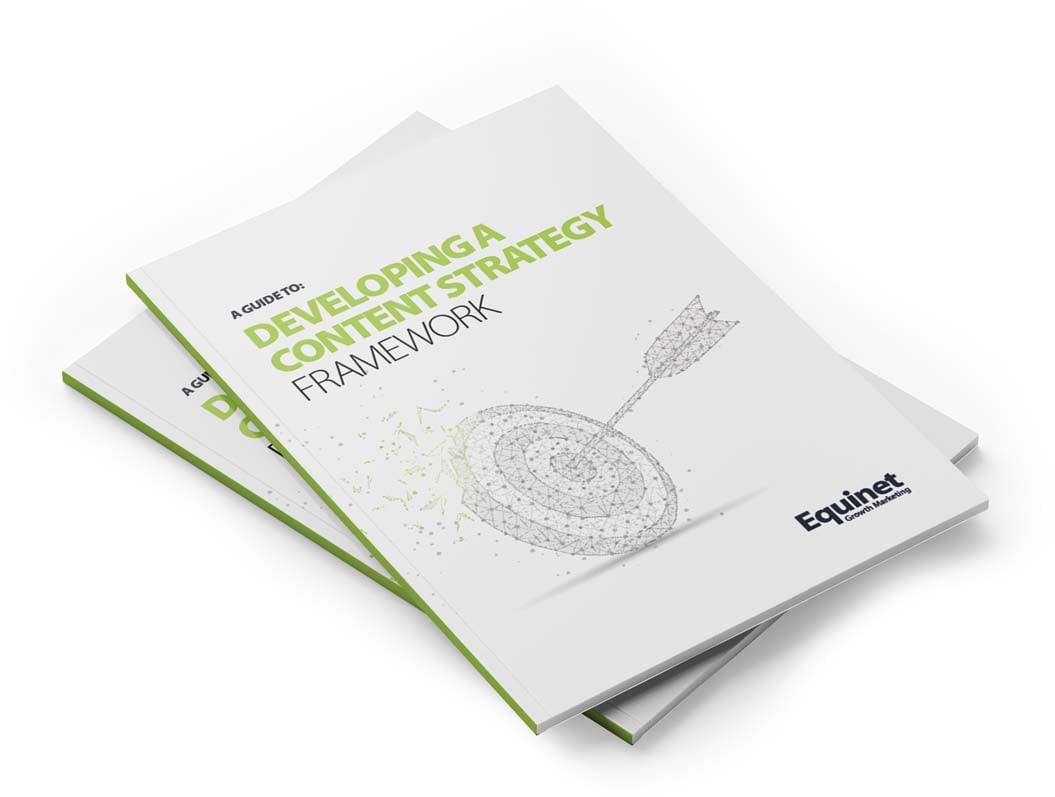

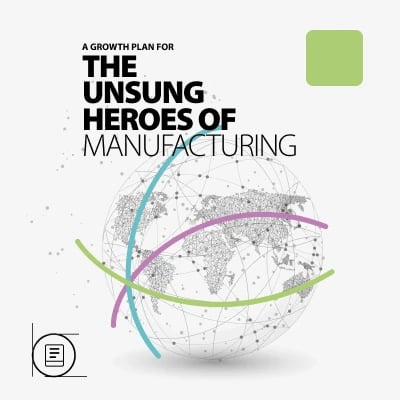
.png?width=800&height=800&name=A-review-of-the-seven-common-mistakes-title%20(1).png)

.png?width=400&height=400&name=B2B%20Content%20Research%20Cover%20test1%20(1).png)

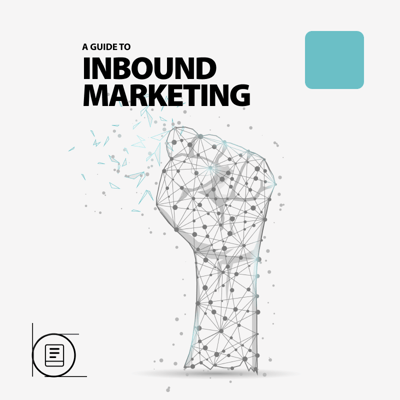
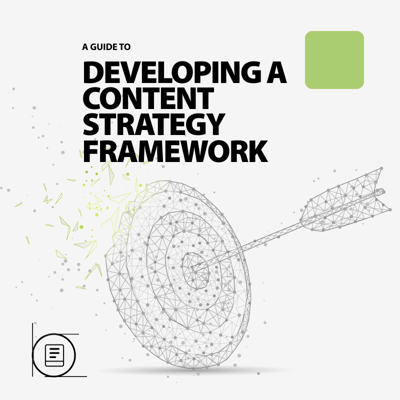
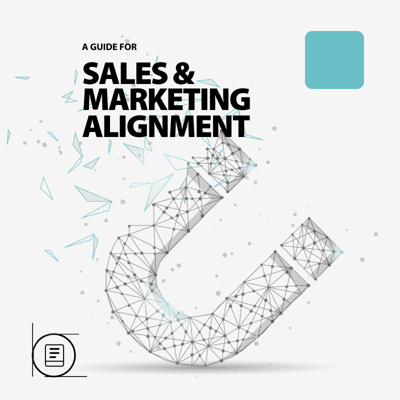


.png?width=400&height=400&name=CRM%20Optimisation%20(1).png)
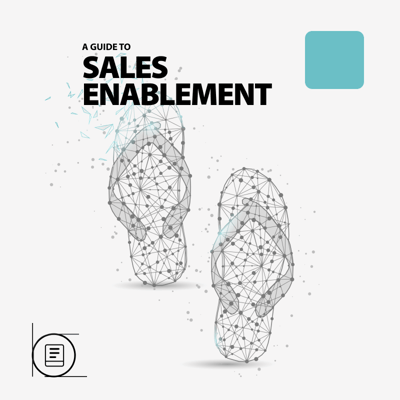

.png?width=800&height=800&name=7%20Threats%20to%20Contract%20Manufacturers%20(1).png)